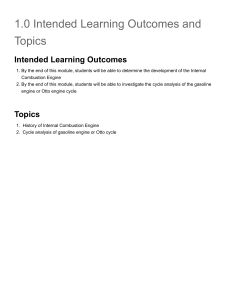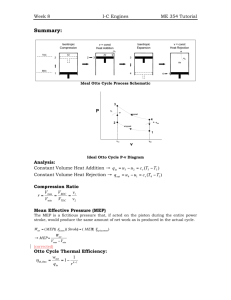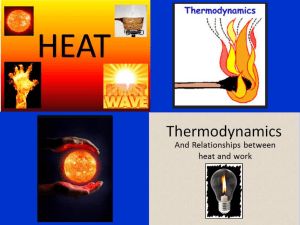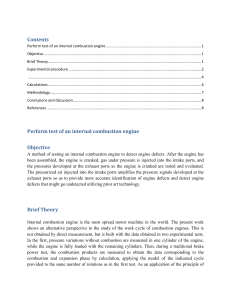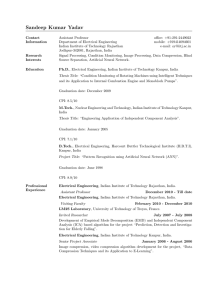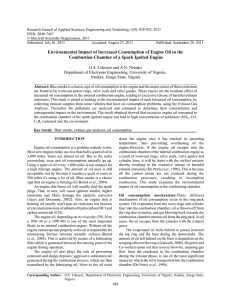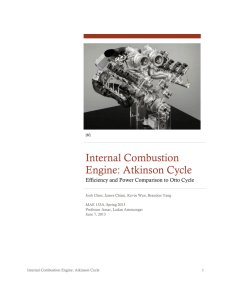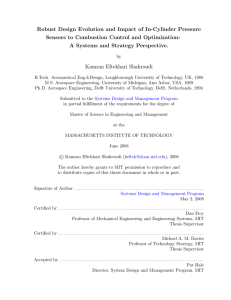Looking at the Efficiency of Otto Cycle Engines By: Aaron Nichols
advertisement
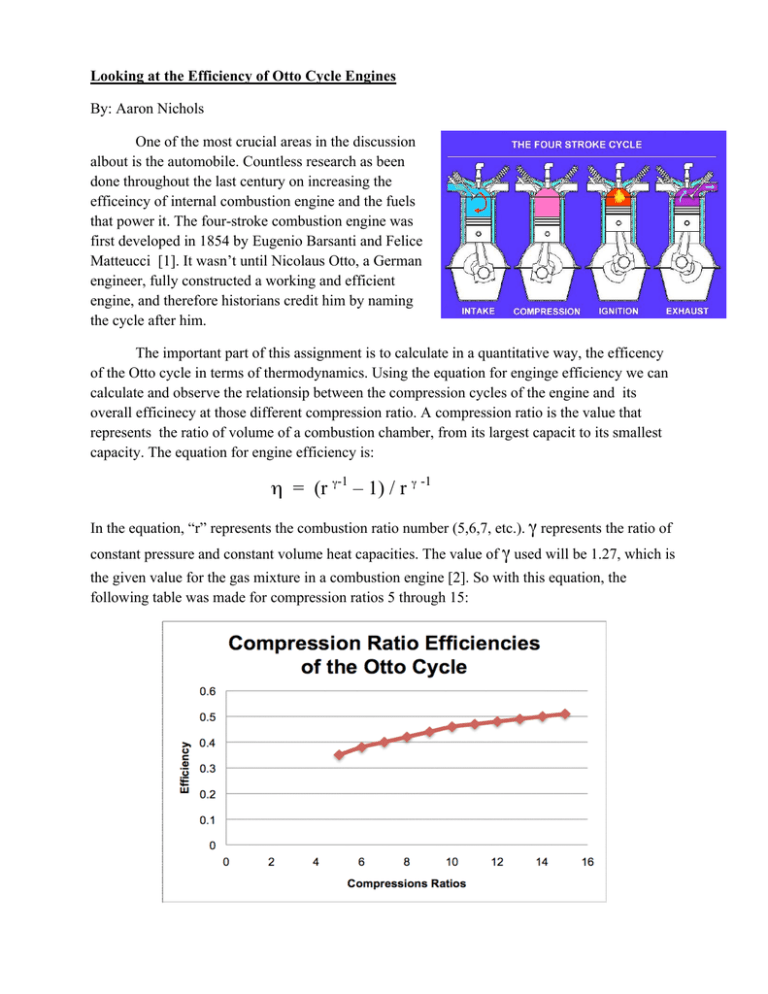
Looking at the Efficiency of Otto Cycle Engines By: Aaron Nichols One of the most crucial areas in the discussion albout is the automobile. Countless research as been done throughout the last century on increasing the efficeincy of internal combustion engine and the fuels that power it. The four-stroke combustion engine was first developed in 1854 by Eugenio Barsanti and Felice Matteucci [1]. It wasn’t until Nicolaus Otto, a German engineer, fully constructed a working and efficient engine, and therefore historians credit him by naming the cycle after him. The important part of this assignment is to calculate in a quantitative way, the efficency of the Otto cycle in terms of thermodynamics. Using the equation for enginge efficiency we can calculate and observe the relationsip between the compression cycles of the engine and its overall efficinecy at those different compression ratio. A compression ratio is the value that represents the ratio of volume of a combustion chamber, from its largest capacit to its smallest capacity. The equation for engine efficiency is: η = (r γ-1 – 1) / r γ -1 In the equation, “r” represents the combustion ratio number (5,6,7, etc.). γ represents the ratio of constant pressure and constant volume heat capacities. The value of γ used will be 1.27, which is the given value for the gas mixture in a combustion engine [2]. So with this equation, the following table was made for compression ratios 5 through 15: From the table, we see that the efficiency of the Otto Cycle ranges between 35% to 51%. It is interesting to note that going from 5 to 10 the efficiency only increases by about 10%. Moving from 10 to 15 it only increases by 6%. If (theoretically) you were to increase the compression ratio to 40 or 50, you would only to be able to get a efficiency rating af approximatly 65%. This would be difficult to do because an engine isn’t designed to be able to have that kind of compression ratio. So in examining the Otto Cycle, we see from a thermodynamic standpoint that it only transforms half of the heat input into useful work, which leaves a significant amount of energy unused or lost for the Otto Cycle. But with the increase in technology, alternative fuels, and America’s drive to use the automobile, the internal combustion engine has a promising future in the search to find a better and more efficient means of transportation. References: [1] http://en.wikipedia.org/wiki/Four-stroke_engine#History [2] http://igss.wdfiles.com/local--files/rod-macrae/SuppNotesEngines.pdf
